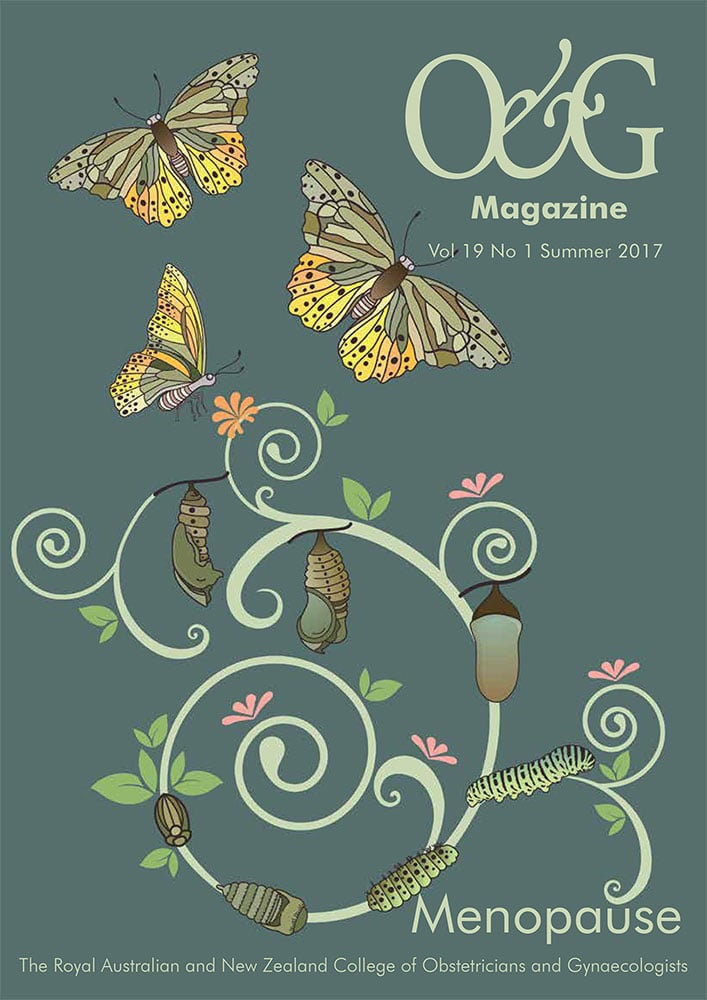It is a common belief that menopause is a quintessentially human phenomenon. It’s a matter of definition really, as to have menopause, must there have been menstruation? Most animals don’t menstruate as they merely resorb the endometrium should fertilisation not occur. Many of the non-human primates, such as chimpanzees, gorillas, orangutans and macaques, do in fact menstruate, but do so until death and, ipso facto, can bear young into old age. They therefore don’t go through menopause.
Recently, however, it has become known that two other species go through menopause. Surprisingly, these are killer whales and pilot whales. Most likely these animals don’t menstruate, but what they uniquely do, along with humans, is stop bearing young many years before they die. That is, they undergo ovarian failure at a younger age. There is potentially a 40–50-year gap between ‘menopause’ and death. This allows them, within their societies, to adopt the important role of grandmothering, as the males die at a much younger age of around 30. In the case of the killer whale, with years of experience behind them, they teach their grandchildren how to find their important, but elusive, source of food, namely salmon. These findings have only been recently published in Current Biology by Croft et al in a study of two families of killer whales off the NW Pacific Coast of the USA and Canada.
One might also feel that perhaps menopause is a modern condition because of the lower life expectancy in former times. Life expectancy is skewed by the high infant mortality rates of previous eras, but this has no effect on human longevity, which hasn’t altered in millennia. Therefore, there have always been an ample number of women experiencing menopause and living on to a ripe old age. References to menopause were made even by Aristotle.
One of my prized possessions is a book salvaged from a jumble sale titled ‘The Family Medical Guide’ by Dr George Fullerton, published in Sydney in 1878. It makes you realise how far we’ve advanced in our knowledge since then, yet at the same time, in some subjects, how little things have changed. Luckily, when it comes to menopause, we have come a long way. This book was written in Victorian times, when women could be segregated in asylums for being hysterical during menopause. Although the term menopause (la menepausie) had been first coined in 1821 by the French physician, Charles Pierre Louis de Gardanne, in this book it is simply termed ‘the cessation of menses’. Nowhere are hot flushes, night sweats or vaginal dryness mentioned. Attention, however, is directed more towards management of perimenopausal bleeding. Fullerton wisely wrote, ‘it is certain that the female constitution requires judicious management at this crisis.’ Treatments such as cold applications to the privates, acetate of lead with vinegar and laudanum, cream of tartar in an infusion of cinnamon, strict bedrest, oral podophylline and vaginal plugs were all in the mix.
A further look along my bookshelf reveals a volume from 1915 titled ‘An Index of Treatments by Various Writers’. By that time, menopause had become the appropriate term and ‘headache, flushings and perspirations’ were being acknowledged as symptoms to be dealt with – the most efficient remedy? Potassium bromide! For perimenopausal bleeding lead acetate was passé and liquid extract of ergot with strychnine the way to go.
Around that time in the early 20th century, investigations into ovarian function and chemistry were in full swing and these more archaic treatments would soon pass into oblivion. By 1929, Edward Doisy from St Louis had isolated oestrone, the first female hormone to be discovered, from the urine of pregnant women. In 1935, oestradiol was isolated from the ovary and before long chemists had produced ethinyl oestradiol and diethylstilboestrol. By 1941, Premarin was being manufactured. Progesterone had a similar meteoric rise from its first discovery in 1933. The progress to hormone replacement therapy (HRT), and oral contraception, over the following decades was a given.
Menopause is truly an experience that varies not only from epoch to epoch, but also from culture to culture and woman to woman. This is where our role starts. Some women breeze through the menopause, but a good 20 per cent really suffer. It is hoped that this issue of O&G Magazine will enlighten us here in this post-WHI era where the term ‘HRT’ has been consigned to the history books and ‘MHT’ de rigeur.
At O&G Magazine we like to think that each issue of the magazine is like a mini textbook and with this philosophy in mind, we hope the wide selection of articles on this topic (with grateful thanks to our wonderful authors) will be helpful to the gynaecologist, GP and trainee alike, as we help our patients to put this potentially difficult time in their lives behind and enjoy, like the killer whale, the grandmothering years, with or without the grandchildren.






Leave a Reply